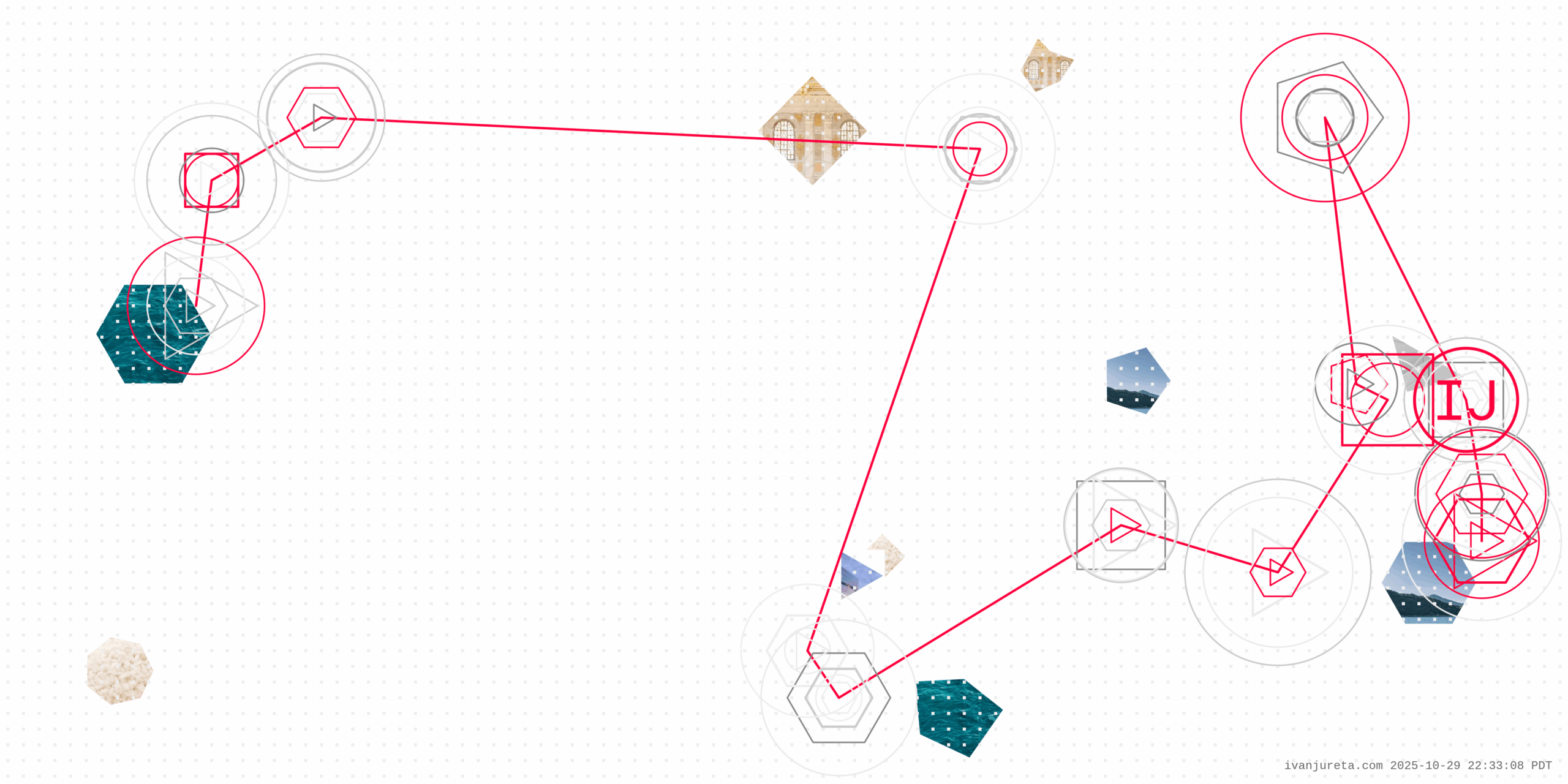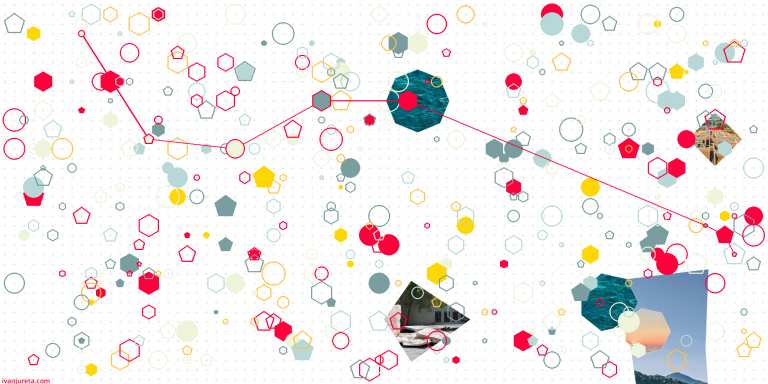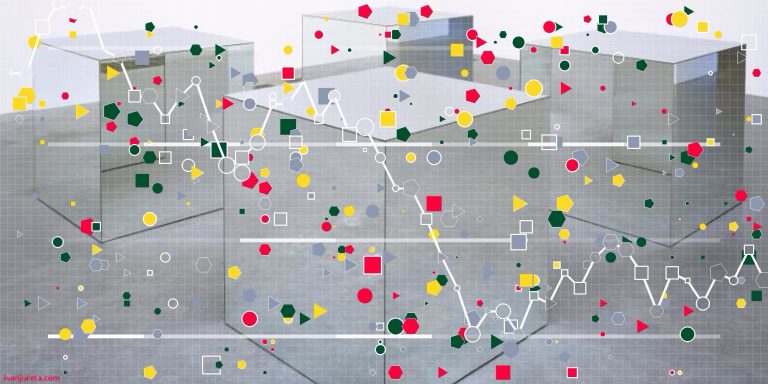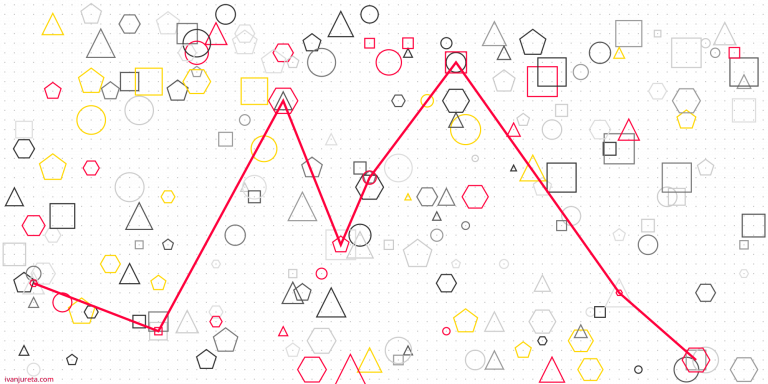More Complex Decisions → More Decision Makers?

- Complexity of a decision: The number and diversity of interacting elements and relationships that must be understood to make a decision (Simon, 1962).
- Interdependence of a decision: The extent to which outcomes for one actor or unit depend on the actions of others (Thompson, 1967).
- The complexity and interdependence of a decision problem can influence how many people should participate in decision making.
- Factors shaping complexity include uncertainty, ambiguity, diversity of information, and system coupling.
- Factors shaping interdependence include task dependencies, feedback loops, coordination intensity, and shared resources.
- As these factors intensify, research suggests that the cognitive and informational limits of individuals make collective decision-making more valuable, though not without costs.
- Empirical studies indicate that group decision-making can improve understanding and legitimacy under high complexity, but coordination and communication burdens increase as groups expand.
- Effective decision governance involves calibrating participation so that the benefits of diversity and deliberation outweigh the costs of coordination and delay.
Case Study: AMI’s New Product Investment Decisions
Context. Advanced Machines Inc. (AMI), a medium-sized manufacturer of industrial automation equipment, periodically evaluates proposals for new product investment. The following two variants of such decisions illustrate how differences in complexity and interdependence shape who participates and how the process is governed.
Variant 1: Low Complexity and Low Interdependence. AMI’s engineering team proposes an upgrade to an existing servo motor used in its production line. The design builds on known technologies, suppliers are established, and the modification does not require significant changes in production processes. The market is well understood, and the financial risk is limited. In this setting, the decision concerns primarily technical feasibility and cost-benefit assessment. The Chief Engineer, Operations Director, and CFO can assess the proposal efficiently with brief input from others. Because the decision relies on established routines and involves few interdependencies, it can be handled within a small, hierarchical structure.
Variant 2: High Complexity and High Interdependence. The next year, AMI considers investing in a new autonomous robotic welding system for shipyards. The proposal integrates multiple technologies—AI vision systems, safety protocols, and data analytics—requiring new suppliers, uncertain certification processes, and collaboration across engineering, software, safety, legal, and marketing functions. The market is less predictable, and potential outcomes depend on factors outside AMI’s control, such as regulatory changes and client adoption rates.
Here, uncertainty, information diversity, and interdependencies are high. The engineering, operations, and marketing teams cannot make informed decisions in isolation, since product design, cost structure, and value proposition are intertwined. AMI therefore creates a cross-functional investment committee, bringing together representatives from relevant units. The process becomes slower and more deliberative, but potentially more resilient to error or oversight.
These two variants highlight that as complexity and interdependence grow, the value of collective decision-making tends to increase, even though the costs of coordination may also rise.
Factors Influencing Complexity and Interdependence
Academic research distinguishes a range of factors that shape the perceived and actual complexity of a decision problem, as well as the degree to which decisions depend on one another. These factors rarely act in isolation; they interact, reinforcing or offsetting one another depending on context.
- Uncertainty. Uncertainty refers to the inability to predict outcomes or assign probabilities to them (Knight, 1921; Milliken, 1987). It arises from technological novelty, market volatility, or limited prior experience. High uncertainty expands the range of plausible outcomes and increases the need for expertise and judgment from multiple perspectives.
- Ambiguity. Ambiguity concerns not just unknown outcomes but unclear causal relationships among variables (Weick, 1995). In ambiguous situations, decision makers may disagree on how to define the problem itself or which criteria to prioritize. Collective sensemaking—through discussion and interpretation—can help reduce ambiguity, though it may also amplify disagreement if participants hold incompatible frames.
- Information Diversity. Complexity grows with the heterogeneity of relevant information (Galbraith, 1973). In product investment, technical, financial, regulatory, and market data may be distributed across organizational units. The greater the diversity of inputs, the more difficult it becomes for any individual to integrate them coherently. Collaborative decision structures can help, but only if participants can communicate effectively across domains.
- System Coupling. Systems are tightly coupled when a change in one component quickly affects others (Perrow, 1984). In product development, coupling appears in design interdependencies, shared data systems, or synchronized supply chains. When coupling is tight, isolated decisions can have disproportionate consequences, making joint deliberation more important but also more complex.
- Task Dependencies. Interdependence emerges when one unit’s work depends on another’s output (Thompson, 1967). Sequential dependencies—where tasks follow one another—require coordination of timing; reciprocal dependencies—where tasks influence each other—require continuous interaction. The more reciprocal the dependency, the stronger the case for multi-party decision involvement.
- Coordination Intensity. Coordination intensity measures the frequency and depth of communication needed to align interdependent activities (Malone & Crowston, 1994). Some decisions require only periodic updates; others demand near-constant synchronization. As coordination intensity rises, so does the need for mechanisms—committees, platforms, or meetings—that enable shared awareness and adaptive adjustment.
- Feedback Loops. Feedback occurs when decisions influence variables that, in turn, affect future decisions (March, 1991). In product investment, early design choices can constrain later production options or pricing strategies. Strong feedback loops create dynamic interdependence, often necessitating iterative and collective decision-making to avoid lock-in or misalignment.
- Shared Resources and Goals. When multiple units share budgets, staff, or reputational stakes, their decisions become mutually dependent. Shared resources increase the need for coordination mechanisms that ensure fairness and legitimacy in allocation. Without such mechanisms, unilateral decisions may trigger conflict or inefficiency.
Mechanisms Linking Complexity and Interdependence to the Number of Decision Makers
Scholars have proposed several mechanisms through which changes in complexity and interdependence influence how many people should be involved in making a decision. None of these mechanisms is deterministic; they point instead to tendencies and trade-offs that decision governance must balance.
- Information Processing Capacity. Galbraith (1973) argued that organizations must match their information processing capacity to environmental complexity. When uncertainty rises, structures that increase lateral communication—such as cross-functional teams—become more effective. Each additional decision participant adds capacity for interpretation and sensemaking but also introduces new communication links that can overload the system if not managed carefully.
- Bounded Rationality and Problem Decomposition. Herbert Simon (1962) observed that individuals are boundedly rational—they cannot process all relevant information. Complex decisions are therefore decomposed into subproblems assigned to different specialists. This necessitates multiple decision makers whose partial solutions must later be integrated. The governance challenge lies in ensuring that local optimizations do not undermine the system as a whole.
- Cognitive Diversity and Collective Intelligence. Research on collective intelligence (Hong & Page, 2004) suggests that groups of people with diverse knowledge and perspectives can outperform more homogeneous teams on complex problems. As complexity grows, diversity becomes an asset. Yet diversity also increases the likelihood of misunderstanding and conflict, making the benefits contingent on the quality of deliberation and shared norms of reasoning.
- Coordination and Communication Costs. Arrow (1974) and March and Olsen (1976) noted that adding decision makers expands the need for coordination. While shared information may improve judgment, it also consumes time and effort. Empirical research suggests that there is a point at which the marginal informational gain from adding participants is outweighed by the cost of organizing them. Governance systems thus face a continual balancing act between inclusiveness and efficiency.
- Preference Aggregation and Legitimacy. When decisions affect multiple stakeholders, participation can enhance perceived legitimacy (List, 2011). The Condorcet jury theorem implies that under certain conditions—independent judgments and moderate competence—the probability of a correct collective decision rises with group size. However, real-world decisions rarely meet those conditions; interdependence of preferences and strategic communication may distort aggregation. Mechanisms such as deliberation or consensus-seeking can mitigate such risks, but only partially.
- Network Interdependence and Relational Governance. Granovetter (1985) and Gulati (1998) emphasized that interdependent actors often rely on relational governance based on trust and repeated interaction rather than hierarchical control. As interdependence deepens, decision-making authority tends to diffuse across connected units. The resulting networks may improve adaptability but complicate accountability and coordination.
- Dynamic Capabilities and Learning. The dynamic capabilities framework (Teece, Pisano & Shuen, 1997) views organizations as systems that sense, seize, and reconfigure opportunities. These activities rely on distributed knowledge, implying that decision-making authority should also be distributed. When complexity increases, greater participation can enhance learning and adaptability. Yet without disciplined governance—shared rules, clear escalation paths, and structured review cycles—such participation may fragment strategy rather than strengthen it.
- Complexity Theory and Nonlinear Effects. From the perspective of complexity theory (Anderson, 1999), organizations are adaptive systems where small changes can produce large, unpredictable effects. In such settings, centralized decision-making often struggles to respond quickly enough. Distributed participation allows parallel exploration of alternatives but can create coherence problems. The optimal number of decision makers, therefore, is likely to vary over time as the system evolves.
Balancing Informational Diversity and Coordination
The relationship between complexity, interdependence, and the number of decision makers is not linear. Empirical and theoretical work suggests an inverted-U relationship: up to a point, adding decision makers improves understanding and judgment; beyond that point, it adds noise, conflict, and delay (O’Reilly, Caldwell & Barnett, 1989).
In AMI’s simpler investment decision, broad participation would offer little additional insight relative to its coordination cost. In the more complex, interdependent case, including multiple functions provides essential knowledge integration but demands careful design of the process. Techniques such as structured deliberation, designated coordinators, or digital collaboration platforms can help manage communication load.
Decision governance frameworks can codify these calibrations. They might, for instance, establish indicators—such as levels of technological uncertainty or number of interdependent units—that trigger escalation from individual to collective decision-making. Over time, such rules help organizations adapt participation levels to the evolving complexity of their decision environment.
Implications for Decision Governance
Complexity and interdependence do not dictate how many people must participate in a decision, but they help explain why participation requirements differ across contexts. When problems are simple and loosely connected, efficiency tends to favor concentration of authority. When uncertainty, ambiguity, and coupling rise, wider participation may enhance understanding, legitimacy, and resilience, provided coordination remains manageable.
Decision governance provides the framework through which such balancing can occur. By defining when to involve others, how to integrate their input, and how to maintain accountability, governance systems allow organizations to adapt decision-making to the nature of the problems they face rather than applying uniform procedures.
Another View: When More Decision Makers Increase Complexity and Interdependence
While broader participation is often justified as a response to complex and interdependent problems, research also suggests that expanding the number of decision makers can itself become a source of additional complexity. The decision process, once expanded, acquires its own dynamics—new interdependencies emerge not from the substance of the problem, but from the structure of participation.
First, communication pathways multiply. According to Steiner’s (1972) analysis of group productivity, every additional participant increases the number of potential communication links exponentially. As group size grows, the effort needed to share information, ensure understanding, and coordinate interpretations expands non-linearly. Miscommunication or selective attention can lead to information loss or distortion, making the process itself a complex system of interacting cognition and misunderstanding.
Second, interdependence arises from social and strategic behavior. When more participants are involved, each individual must anticipate how others will interpret information or respond to proposals. March and Olsen (1976) described such processes as “organized anarchies”: multiple actors pursue partially conflicting goals under ambiguous rules. The decision becomes not merely about choosing an option but about managing coalitions, reputations, and alignments.
Third, the cognitive framing of the problem becomes unstable. Diverse participants bring different heuristics, time horizons, and evaluative criteria. Research on group cognition (Cooke et al., 2000) shows that while diversity can expand collective knowledge, it can also fragment shared mental models. The group may need additional time and structure to converge on what the problem actually is before assessing alternatives.
Fourth, procedural and coordination mechanisms add layers of governance. Committees, voting procedures, or consensus protocols introduced to manage participation create new dependencies: progress in one sub-group hinges on decisions in another. Over time, the decision problem becomes entangled with the process designed to solve it.
Unless governance structures explicitly manage these emergent interdependencies, attempts to reduce uncertainty through inclusion may inadvertently create new forms of it.
References
- Anderson, P. (1999). Perspective: Complexity Theory and Organization Science. Organization Science.
- Arrow, K. J. (1974). The Limits of Organization. Norton.
- Condorcet, M. (1785). Essai sur l’application de l’analyse à la probabilité des décisions rendues à la pluralité des voix.
- Galbraith, J. R. (1973). Designing Complex Organizations. Addison-Wesley.
- Granovetter, M. (1985). “Economic action and social structure: The problem of embeddedness.” American Journal of Sociology.
- Gulati, R. (1998). “Alliances and networks.” Strategic Management Journal.
- Hong, L., & Page, S. E. (2004). “Groups of diverse problem solvers can outperform groups of high-ability problem solvers.” Proceedings of the National Academy of Sciences.
- Knight, F. H. (1921). Risk, Uncertainty, and Profit. Houghton Mifflin.
- Malone, T. W., & Crowston, K. (1994). “The interdisciplinary study of coordination.” ACM Computing Surveys.
- March, J. G., & Olsen, J. P. (1976). Ambiguity and Choice in Organizations.
- Milliken, F. J. (1987). “Three types of perceived uncertainty about the environment: State, effect, and response uncertainty.” Academy of Management Review.
- O’Reilly, C. A., Caldwell, D. F., & Barnett, W. P. (1989). “Work group demography, social integration, and turnover.” Administrative Science Quarterly.
- Perrow, C. (1984). Normal Accidents: Living with High-Risk Technologies. Basic Books.
- Simon, H. A. (1962). “The architecture of complexity.” Proceedings of the American Philosophical Society.
- Teece, D. J., Pisano, G., & Shuen, A. (1997). “Dynamic capabilities and strategic management.” Strategic Management Journal.
- Thompson, J. D. (1967). Organizations in Action. McGraw-Hill.
- Weick, K. E. (1995). Sensemaking in Organizations. Sage.
- Cooke, N. J., Gorman, J. C., & Rowe, A. L. (2000). “Team cognition.” Proceedings of the Human Factors and Ergonomics Society Annual Meeting.
- Steiner, I. D. (1972). Group Process and Productivity. Academic Press.





